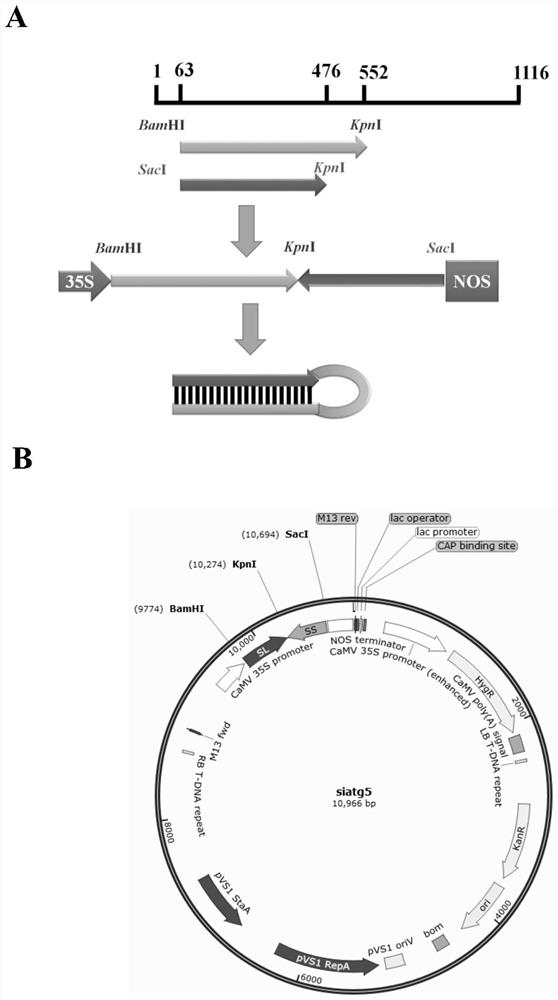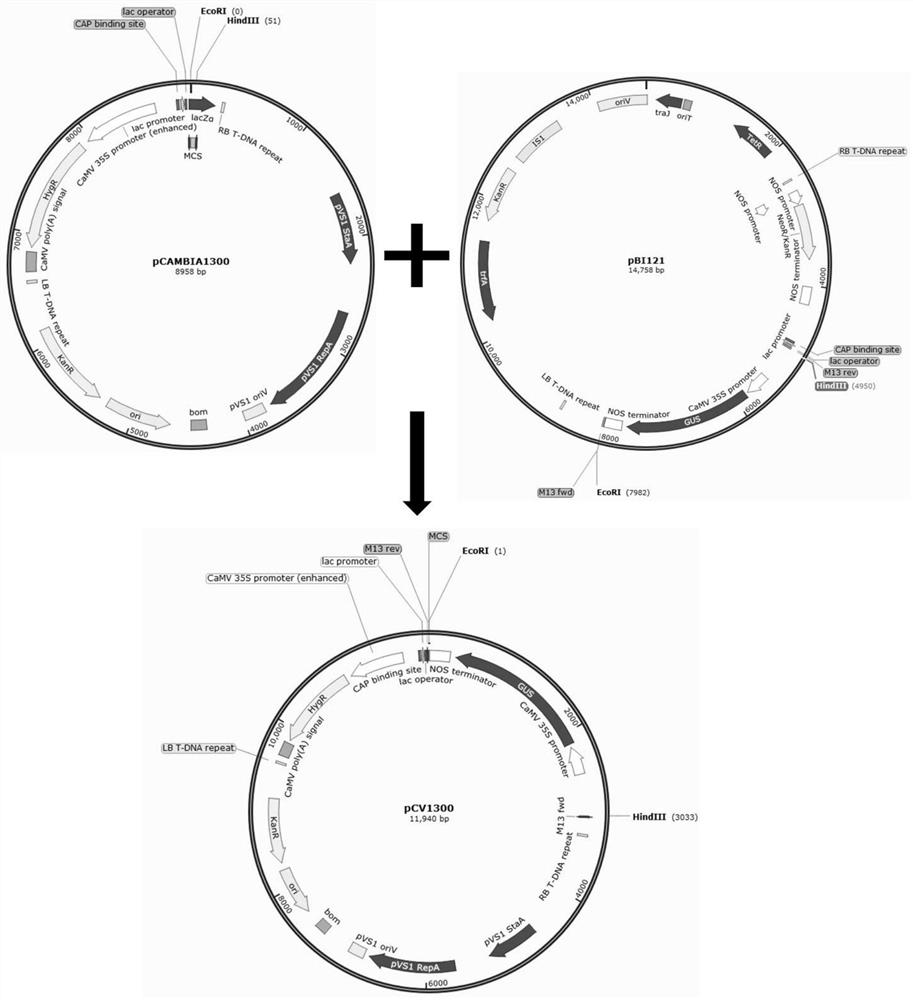Use of an atg5 transient silencing carrier to alleviate the degradation of organelle-localized proteins
A protein degradation and organelle technology, applied in the field of transient silencing vectors, can solve the problems of low target protein expression and restrict the industrialization of plant expression systems, and achieve the effect of promoting expression
- Summary
- Abstract
- Description
- Claims
- Application Information
AI Technical Summary
Problems solved by technology
Method used
Image
Examples
Embodiment 1
[0044] Example 1 Transformation of pCV1300 binary expression vector
[0045] The present invention selects pCV1300 as the binary expression vector constructed by the silencing vector, and its structure diagram is as follows figure 2 shown.
[0046] Plasmids pCAMBIA1300 and pBI121 were digested with HindIII and EcoRI, and the 35S-GUS-NOS segment of pBI121 was ligated into pCAMBIA1300 vector to form pCV1300 vector.
Embodiment 2
[0047] Example 2 Construction of siatg5 silencing vector
[0048] 1. Screening of target fragments
[0049] The method for screening RNA interference gene silencing fragments with a hairpin structure is:
[0050] According to the Nb-Atg5 gene sequence (SEQ ID No.3) of NCBI (KX369397.1, full length 1116bp), it was segmented into short continuous nucleotide fragments with a length of about 300-500bp, through http: / / vigs. solgenomics.net / Analysis of the possible specific silence segment is a 1-300bp sequence, but the sequence analysis shows that Niben101Scf02433g01001.1 (referred to as Nb1001, this sequence has a high homology with Atg5, and also has the Autophagy protein Apg5 domain, but the gene function is unknown ) gene sequence (SEQ ID No.4) is highly conserved with NbAtg5 from about 450-1000 segments ( image 3 ). And according to the analysis of NCBI website (https: / / blast.ncbi.nlm.nih.gov), it was further confirmed that the conserved region of NbAtg5 and Niben101Scf0...
Embodiment 3
[0070] Example 3 Validation of GFP-Atg8f as an indicator protein of autophagy pathway
[0071] Atg8 has different homologues in different species, and Atg8f in Arabidopsis and N. benthamiana is an effective protein for monitoring the autophagy pathway. Because GFP is more sensitive to pH, after the transient expression of GFP-Atg8f, the modified GFP-Atg8f cooperates with other autophagy proteins to form autophagic vesicles, and then the GFP protein fused with Atg8f is cleaved and released into the cytoplasm in an acidic environment. The activation level of the autophagy pathway can be detected by detecting the protein expression of free GFP (Cleave GFP).
[0072] MV (methyl viologen) is an inducer of the autophagy pathway, and MV treatment can activate the autophagy pathway. Therefore, MV treatment was used to verify whether GFP-Atg8f can be used as an indicator protein of the autophagy pathway. According to the XM_016638904.1 sequence, the Nicotiana benthamiana Atg8f seque...
PUM
 Login to View More
Login to View More Abstract
Description
Claims
Application Information
 Login to View More
Login to View More - R&D
- Intellectual Property
- Life Sciences
- Materials
- Tech Scout
- Unparalleled Data Quality
- Higher Quality Content
- 60% Fewer Hallucinations
Browse by: Latest US Patents, China's latest patents, Technical Efficacy Thesaurus, Application Domain, Technology Topic, Popular Technical Reports.
© 2025 PatSnap. All rights reserved.Legal|Privacy policy|Modern Slavery Act Transparency Statement|Sitemap|About US| Contact US: help@patsnap.com



